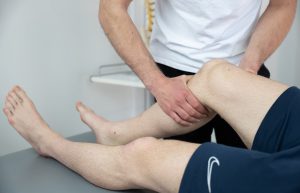
I have already undergone surgery on my right knee twice. This happened after 10 years of engaging in sports.The first operation was for the patella (dislocated patella) which was relocated.. after six months.The second operation was for the meniscus and cartilage.
Despite all this, I still experience pain. The exercises for the quadriceps are too painful, so I no longer do them. My orthopedist says this is normal. I haven’t engaged in any sports activities since the first operation and I don’t perform heavy physical tasks. I have had an MRI done.
Conclusion:
Signs of patellar cartilage chondromalacia (Grade I according to Outerbridge)
Chondral lesion of the medial articulating surface of the patellar cartilage
High patella (patella alta)
What does the MRI indicate, and what should I do because I no longer know how to help myself?
Generally, knee pain due to cartilage damage, especially on the patella, requires a more complex approach to treatment, particularly in terms of exercise, beyond just strengthening the muscles.
Namely, there is a reflex at work that, when knee pain is present, directly reduces the maximum strength of the quadriceps muscle through the spinal cord. This happens because the body, with reduced strength, attempts to reduce the force acting on the damaged cartilage. However, exercising in pain exacerbates this reflex and directly weakens the muscle, contrary to the desired outcome. If we don’t exercise, the muscle will weaken even without this reflex. Additionally, reduced movement impairs cartilage metabolism, making it more sensitive to pressure, which increases pain and further weakens the muscle. It’s a vicious cycle.
This situation can be remedied by combining two types of knee and surrounding muscle activation. The first is aerobic exercise, specifically riding a stationary bike with minimal resistance. Such movement accelerates cartilage metabolism and reduces its hypersensitivity. Then, you can start with the first pain-free and indirect, and then direct strengthening of the quadriceps, gradually intensifying the exercises.
Along this path, some methods of manual therapy can be beneficial (patella and knee mobilization/manipulation, trigger points, fascial manipulations). Isokinetic exercise can significantly shorten the recovery time as it minimizes pressure on the patella during muscle activation.
